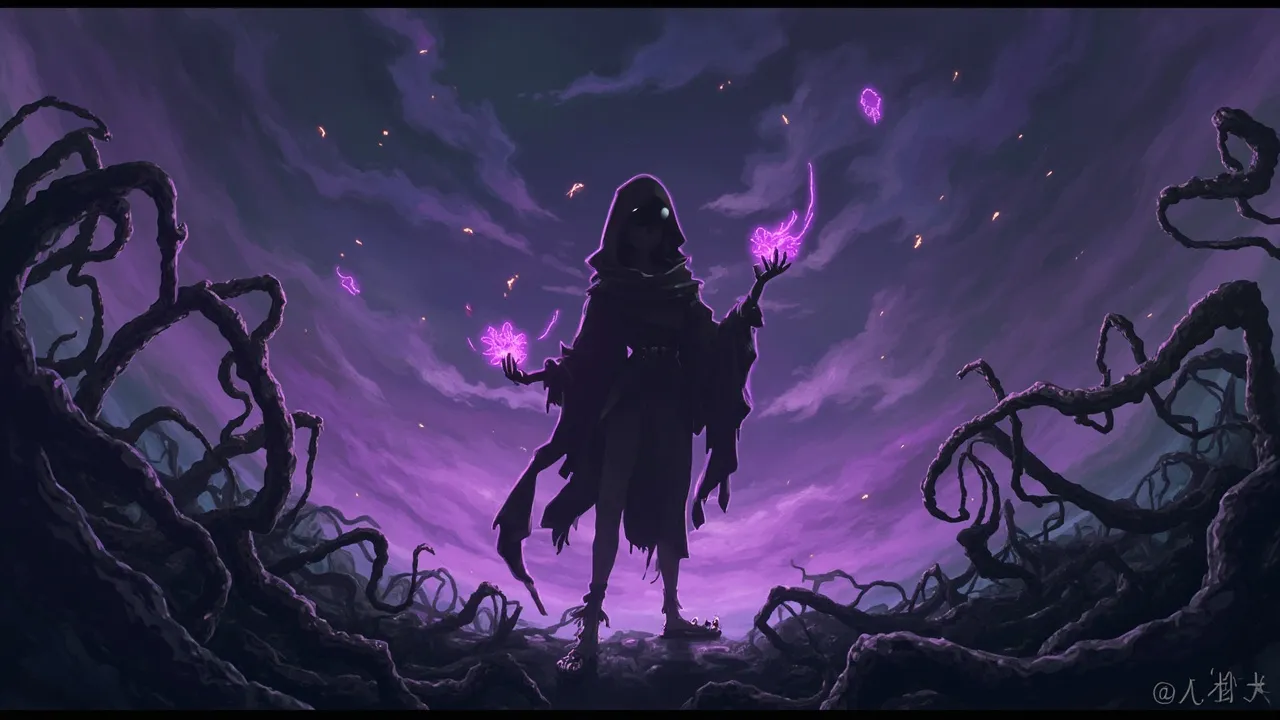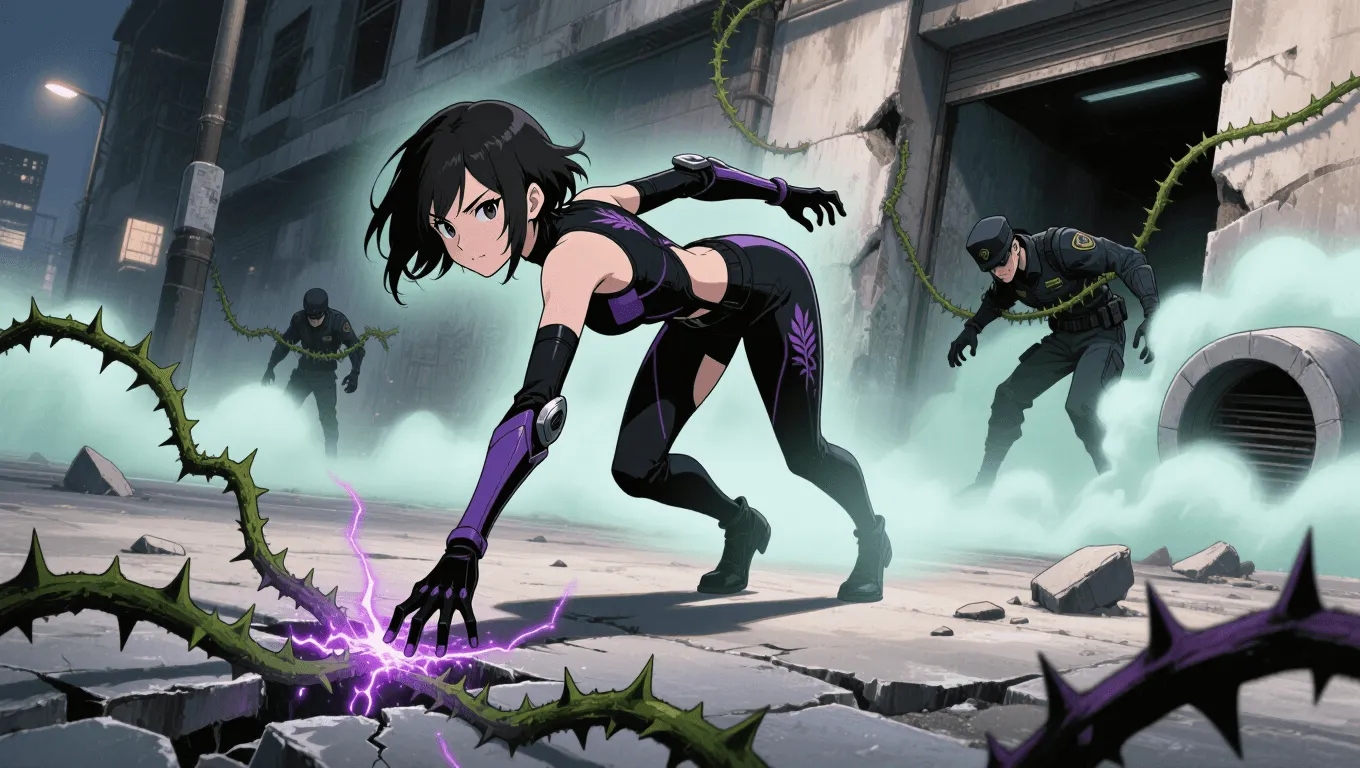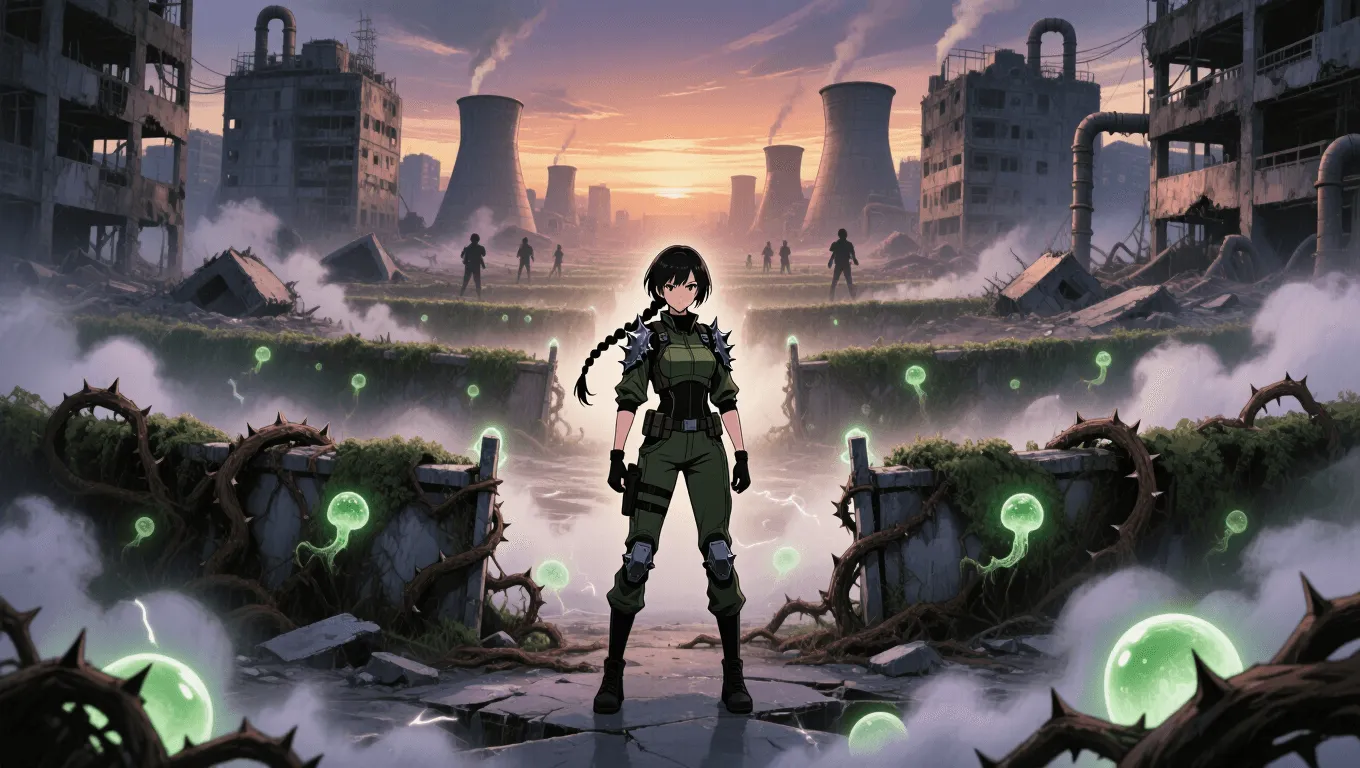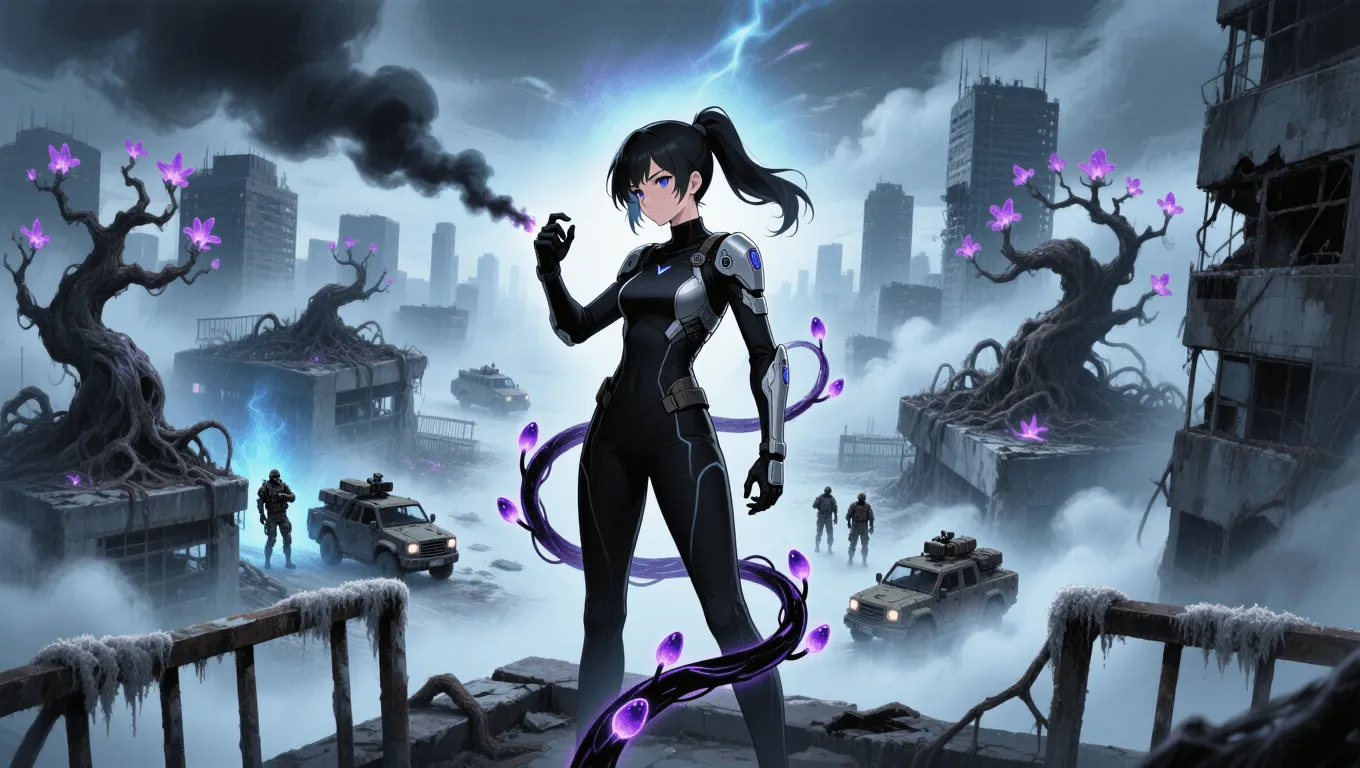Blight Blossom

Blight Blossom Video Demo 🎬
Table of Contents
Blight Blossom is a superpower that fuses nature manipulation with decay, allowing its user to command corrupted flora, toxic spores, and necrotic vines that feed on life and matter. Instead of gentle growth and healing, this power twists plants into weapons, turning green environments into lethal blighted gardens. It is often associated with villains, anti-heroes, and morally grey guardians of nature who believe destruction is the first step toward renewal.
What Is Blight Blossom?
Blight Blossom is a form of corrupted plant manipulation where the user controls vegetation that has been infused with poison, rot, and entropy. Rather than simply making plants grow, the power modifies them at a biological and sometimes mystical level, producing:
-
Wilting yet hyper-aggressive vines
-
Flowers that release hallucinogenic or necrotic pollen
-
Thorny brambles that drain vitality
-
Fungal blooms that spread contagion or corruption
In most settings, Blight Blossom is considered a dark counterpart to classic chlorokinesis or plant control. While a traditional plant user might create healing herbs and protective forests, a Blight Blossom user tends to create plague gardens, cursed forests, and toxic overgrowth that reshape the battlefield.
For worldbuilders and RPG players, Blight Blossom fits perfectly into dark fantasy, post-apocalyptic worlds, or eco-horror campaigns. It can be placed alongside many other powers from a larger list of superpowers, and combined with abilities rolled from a random superpower generator to make uniquely twisted characters.
Core Abilities of Blight Blossom
Corrupted Flora Manipulation
The core of Blight Blossom is the capacity to create and control corrupted vegetation. The user can:
-
Animate existing plants, causing them to twist, coil, and lash out
-
Transform healthy flora into diseased or poisonous versions
-
Grow necrotic vines and thorned roots from soil, walls, or even decayed matter
-
Shape blighted trees and bushes into barriers, cages, or impaling spikes
These plants may appear rotten, blackened, or fungal, yet remain unnaturally strong and resilient. In many interpretations, they can feed on ambient life force, corpses, or magical energy to sustain themselves even in hostile environments.
Toxic Pollen and Spore Clouds
Another signature aspect of Blight Blossom is control over toxic pollen, spores, and airborne blight:
-
Pollen clouds that cause paralysis, nausea, or hallucinations
-
Spores that infect biological targets, slowly weakening or mutating them
-
Clouds that obscure vision and create hazardous zones on the battlefield
-
Special strains tailored to different effects: sleep-inducing, mind-clouding, corrosive, or necrotic
These effects make Blight Blossom especially effective at area denial and crowd control. The user can carpet an area in invisible or faintly glowing spores, forcing enemies to retreat, wear protective gear, or expend resources on purification.
Blight Fields and Decay Zones
At more advanced stages, the user can project a “blight field” or “decay aura” that temporarily alters the environment:
-
Plants within the zone wilt, then regrow as twisted, weaponized flora
-
Wooden structures rot and crumble
-
Organic armor and shields weaken
-
The ground itself may crack, soften, or become covered in creeping vines
This gives Blight Blossom a territorial feel; the longer a user holds a position, the more it becomes their home turf, layered with thorns, spores, and traps.
Necrotic Harvest and Self-Sustain
Many versions of Blight Blossom grant limited self-sustaining abilities:
-
Absorbing life energy from plants or infected enemies to heal wounds
-
Drawing strength from decomposing biomass
-
Temporarily enhancing physical attributes while standing in one’s own blighted garden
This does not make the user invincible, but it allows them to survive prolonged engagements if they can maintain a corrupted environment.
Application / Tactical Advantages in Combat
In combat, Blight Blossom is less about direct blasts and more about control, attrition, and shaping the arena:
-
Battlefield control: Walls of brambles, root snares, and choking spore clouds force enemies into predictable paths.
-
Softening targets: Toxins weaken defenses, reduce mobility, and impair senses before a finishing attack.
-
Area denial: Contaminated zones punish enemies for advancing, retreating, or even standing still.
-
Psychological warfare: The grotesque appearance of twisted gardens and rotting vines can terrify or demoralize foes.
-
Sustain: A user who remains within their blighted zone can keep healing and reinforcing their plants, making them very difficult to dislodge.
Blight Blossom shines in drawn-out engagements rather than quick duels. If given time to seed the area with spores, traps, and overgrowth, the user becomes exponentially more dangerous.
Level: Level 1 🏙️, Level 2 🌇, Level 3 🌃
Level 1 🏙️ – Seed of Corruption

At Level 1, Blight Blossom is emerging and relatively small scale:
-
Can slightly wilt plants and make them hostile or thorny in a limited radius
-
Able to grow necrotic vines from existing soil or plant beds, but slowly
-
Spore clouds are weak and short-lived, causing mild irritation or brief dizziness
-
Control is mostly line-of-sight and limited to a handful of plants at once
A Level 1 user might defend a rooftop garden, alley, or small room with corrupted flora, but struggles to influence open battlefields. Misfires and accidental friendly contamination are common, as the user still learns to target their blight.
Level 2 🌇 – Bloom of Decay

At Level 2, Blight Blossom becomes a serious threat:
-
Rapid growth of blighted vines, brambles, and fungal blooms across city blocks or forest clearings
-
Spore clouds with specialized effects: paralytic, hallucinogenic, or corrosive variants
-
Semi-autonomous plant constructs, such as hunting vines that track movement
-
Moderate blight fields that convert neutral terrain into hostile overgrowth over minutes
Now the user can defend entire zones, set up ambushes, and lock down key chokepoints. Blight Blossom at this level can overwhelm squads of normal enemies and seriously challenge enhanced opponents who lack specific counters.
Level 3 🌃 – Plague Garden Sovereign

At Level 3, Blight Blossom reaches apocalyptic potential:
-
The user can trigger continent-level or city-wide blight given time and sufficient energy
-
Entire forests can be converted into sentient, hostile ecosystems obeying the user’s will
-
Spore storms travel on the wind, corrupting regions far beyond the user’s immediate presence
-
Blight fields may warp local ecosystems permanently, creating cursed or forbidden zones
A Level 3 user is less an individual combatant and more a living natural disaster. Campaigns at this level center on stopping or redirecting this overwhelming corruption before it consumes civilizations.
Limitations of Using the Blight Blossom
Despite its power, Blight Blossom has clear limitations to keep it balanced:
-
Dependence on biomass: The user generally needs soil, plants, or organic matter to corrupt. Sterile metal corridors, space stations, or desert glass limit its effectiveness.
-
Time to prepare: Large-scale blight fields require time to grow and spread. Sudden ambushes may catch the user before preparations are complete.
-
Collateral damage: The power rarely discriminates between friend, foe, and environment. Without fine control, allies and neutral areas can be poisoned or ruined.
-
Vulnerability to cleansing: Holy light, purification magic, advanced decontamination, or biotech countermeasures can undo hours of blight work in moments.
-
Physical strain: Maintaining multiple blighted zones and constructs can exhaust the user mentally and physically, leading to burnout or loss of control.
These constraints create interesting story hooks: moral dilemmas about when to unleash the blight, strategic debates about where it can be safely used, and personal arcs around the cost of wielding such a destructive gift.
Weakness Against What Other Superpowers
Blight Blossom has pronounced weaknesses against several categories of powers:
-
Fire manipulation / pyrokinesis: Flames can quickly burn away corrupted flora and sterilize spores, leaving the user exposed.
-
Light, purification, and healing powers: Holy light, life magic, or advanced healing abilities can neutralize toxins and restore corrupted ecosystems.
-
Air and wind control: Aerokinesis can disperse or blow back harmful spores, reduce their concentration, or keep them from settling.
-
Cryokinesis (ice control): Extreme cold can freeze spores and halt plant growth, making it hard for blighted flora to spread or move.
-
Technopathy and high-tech armor: Mechanical or synthetic-based heroes suffer less from biological toxins and can operate in sealed suits, ignoring much of the environmental threat.
These counters make encounters more dynamic. A team armed with powerful fire or cleansing abilities can cut a path through the plague garden, forcing the Blight Blossom user to fight more directly or retreat.
Synergistic Power Combos
Blight Blossom pairs incredibly well with other superpowers, opening the door to creative, thematic combinations:
-
Necromancy or death magic: Blight-infused plants growing from graveyards and bones create horrific necrotic gardens, combining undead minions with strangling roots.
-
Shadow manipulation: Dark shadows cloaking twisted flora make it even harder to see and avoid the plants’ attacks, turning battlefields into nightmare mazes.
-
Blood manipulation: Spores that target bloodstreams become deadlier when partnered with someone who can direct circulation or trigger specific reactions.
-
Weather control: A storm controller can carry blight spores over great distances, creating plague rains or fogs that reshape entire regions.
-
Illusion or fear auras: Mental powers that amplify terror make the already grotesque visuals of blighted ecosystems far more psychologically devastating.
Game masters and writers can combine Blight Blossom with abilities drawn from a broad superpower wiki list or randomly rolled powers from a superpower generator to craft bosses, anti-heroes, or tragic guardians of nature with deep mechanical and narrative synergy.
Known Users
Because Blight Blossom overlaps thematically with plant control and eco-terror abilities, several fictional archetypes and characters can serve as inspiration:
-
A radical eco-terrorist who believes humanity must be culled by plague forests to save the planet.
-
A tragic druid whose connection to nature has been corrupted, turning once-healing magic into rotting gardens.
-
A bio-engineered experiment designed as a living bioweapon, able to seed enemy worlds with hostile ecosystems.
In mainstream comics and media, characters like Poison Ivy and Swamp Thing from DC Comics, or certain versions of Marvel’s Man-Thing and Krakoa, showcase aspects of toxic flora, sentient ecosystems, and dangerous plant manipulation. While their abilities are not always called Blight Blossom, they offer strong visual and thematic reference points for how a corrupted nature power might look and feel in action.
Tabletop RPGs, original webcomics, and homebrew settings often adapt similar concepts under different names, using Blight Blossom–style mechanics to create memorable villains, reluctant protectors, or cursed heroes bound to an unforgiving, rotting nature.
